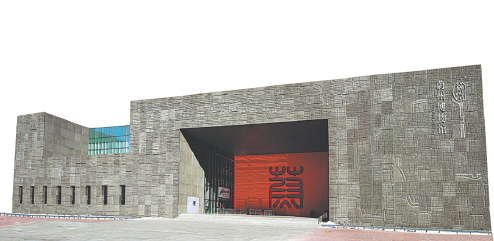

The craft is popular across the country and has been handed down from generation to generation. It's often used as interior decoration, such as on windows or lintels, during weddings and traditional festivals. In some places, people stick paper patterns on snacks as "auspicious" gifts.
Nanzhangzhuang village is dubbed the "top paper-cutting village in China", with a history of more than 200 years of performing the craft. Paper-cut items are also the perfect tourism souvenir from Yuxian, which employs a unique engraving technique.
Local artisans draw various well-designed patterns, which are bound onto the first page of a stack of thin paper. The patterns include characters from traditional art forms, flowers, birds, fish and insects. They put the paper in water, dry it in the sun, place it on a wax plate and then engrave with a chisel. The process allows them to carve dozens of paper-cut items at one time.
The final step is to paint the finished pieces in different colors using calligraphy brushes.
As this year is the Year of the Tiger, some people from the design team of the opening ceremony of the Winter Games visited Yuxian to seek inspiration from tiger, snow and Spring Festival-themed paper-cuts.
At the opening ceremony on Feb 4, the tiger-head hats worn by the bearers of the placards announcing the teams, and uniforms with patterns of paper-cuts worn by child singers and dancers, caught the eyes of the audience.
"The Games have promoted sales of Yuxian paper-cuts. The items must be created as innovative artistic works, so that the industry can prosper," says local paper-cutting artisan Chen Lin, whose artworks were chosen for the ceremony.